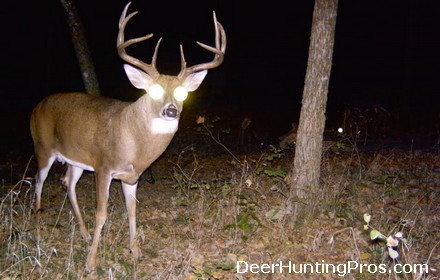There are endless benefits to managing white-tailed deer, for them as well as other wildlife species. Hunting itself is something I enjoy, as well as the meat it puts on the table. Another benefit of managing whitetail populations in an area is that antler growth in bucks tends to increase. This is the result of increased nutrition because of herd management.
Another way to increase deer body condition and antler development is for hunters to provide supplemental feeds as well as minerals. Additional foods translate directly into larger bodied deer and bucks with better antlers. Many research projects have documented that the supplemental feeding of deer through pellets or food plots will increase buck antler quality.

WhitetailDomains.com: “If your deer hunting group has not previously explored supplemental feed as a way to increase antler size, it is undoubtedly the quickest and fastest way to do so with your standing deer herd. Whether you are hunting on small acreage or a large farm or ranch, supplemental feeding, and specifically pelleted protein can make a dramatic impact.
Those of you lucky enough to hunt in areas of alfalfa production or other food sources high in protein content may not need to do this, but in the majority of North America, access to supplemental protein will make a huge difference.”
However, the cost of such management practices may be cost prohibitive; buying high protein feeds for deer is expensive. Additionally, if the overall deer herd is not managed the the effectiveness of feeding will have little impact in our opinion. Too many deer means you end up buying a lot of feed and end up with bucks that have slightly larger antlers than they would have otherwise.
The real product of feeding deer then becomes additional fawns, but too many deer was the problem to begin with. Our recommendation prior to starting a supplemental feeding program is to get a good handle of the property’s deer population. This means surveys to estimate both density and herd statistics such as buck to doe ratio and fawning rate.
Once the deer population is in balance with the habitat, research has estimated that supplemental feeding will increase antler growth in bucks by about 15 percent. So, is is worth feeding deer just for increased antler growth? The answer really depends on the hunter or manager, because there are costs associated with each additional inch of antler.
Deer managers must also think about the age of the bucks on a property. If the age structure is relatively young, then allowing those deer to mature will increase antler size up until age 5 or 6, when antler growth peaks. It’s also important to remember the other benefits of feeding when evaluating whether or not it’s right for you.